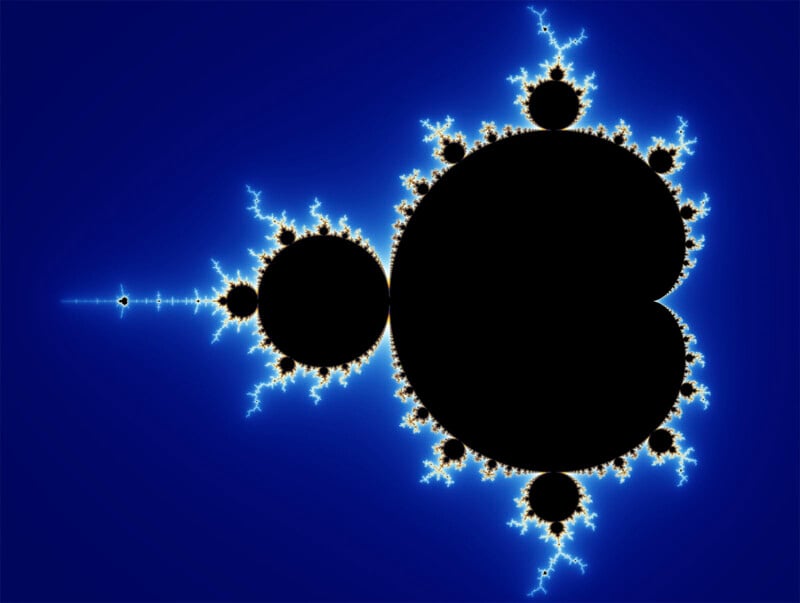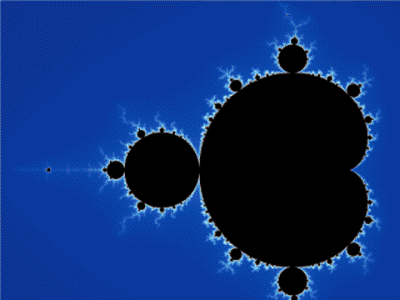This Real-Life Infinite Fractal Zoom Shot Looks Like CGI, But It’s Real
In mathematics, a “fractal” is a never-ending pattern that remains similar across different scales, even infinitely. As seen with many computer-generated fractals, they can perpetually loop without any cuts or transitions. It’s a mesmerizing effect.
Fractals aren’t the exclusive realm of computer-generated graphics. As seen on Reddit, mathematician and mathematical artist Henry Segerman combined 3D-printing techniques with digital photography to create a real-life fractal zoom, as seen above.
“This square part of the fractal is three times larger than this one here,” Segerman describes when showing his 3D-printed pyramid of various spikes and changing topographies. “So I want to zoom the camera into the top of the fractal so it looks the same as it did when we started. Then I can make a looping video that zooms in forever to get a real-life fractal zoom.”
As Segerman notes, he’s not the first to use real-life objects to make fractal zooms. Polish visual artist Feliks Konczakowski has created fractal zooms with objects like Romanesco broccoli. Konczakowski was also behind a viral GIF that confounded viewers with the “coastline paradox.”
Konczakowski often works with a single photograph and photo manipulation to create his looping fractal zoom GIFs. Segerman wanted to see what was possible using multiple photographs of an object that included repeating patterns at various scales.
Segerman explains that if he used digital zoom or zoomed a lens closer to the different parts of the printed fractal object, it would not look smooth, as the distances from the camera to different segments would not line up. Instead, he must use a camera slider to move the camera closer to the object.
Segerman needed to overcome multiple challenges to ensure a smooth loop. One issue is that the camera slider speed must be proportional to the zoom, meaning it can’t move at a constant rate.
“The more effort I put into making everything precise, the more it looks a computer-generated animation, which would, admittedly, have been much easier to make,” Segerman laments.
![]()
To make the fractal, Segerman started with a simple square, which is then chopped into a three-by-three grid. “Then raise up the middle square to make a cube,” he explains. “This process replaces one square with a total of 13 smaller squares, five on the cube and a ring of eight around the cube. Now do the same steps to each of these new squares,” he continues.
A Closer Look at Fractals and Their History
It’s possible to dig much deeper into fractals and go beyond artificially crafted real-world objects. Mathematician Ben Weiss hosted a TEDx talk a few years ago where he looked at naturally occurring fractal patterns, such as in trees, lightning bolts, and even human lungs.
“Our lungs are fractals, that’s how they manage to pack the surface of a tennis court folded down into your ribcage. Our circulatory system is a fractal as well, which is how 60,000 miles of branching vessels and capillaries fit inside every human being,” Weiss explains.
“So, I’m able to stand here and talk to you today because I’m a living, breathing fractal. And so are you,” he continues.
For a long time, despite their prevalence in nature and humans themselves, fractals evaded mathematical understanding. Despite their incredible complexity, which people had long suspected meant would require a similarly complex explanation, fractals are deceptively simple.
Mathematician Benoit Mandelbrot is recognized for his contribution to fractal geometry, and he was one of the first people to use computers to generate fractal geometric images. He also coined the term “fractal” itself, and his French language book Les Objets Fractals: Forme, Hasard et Dimension was a breakthrough in the field. The so-called “father of fractals” applied a simple equation to fractals, enabling the development of essential areas of study like chaos theory and fractal geometry.
The equation is remarkably simple and elegant.
![]()
For a number, z, it’s squared; the original number (c) is then added back to z, and the process begins again. For example, if someone starts with one, it’s squared and added to the original number, which produces two. Now z is two, and that squared is four, plus the original number, one, and the result is five. Five squared is 25, plus one, the sum is 26. At just the seventh step of this simple process, which can go on infinitely, the result is 210,066,388,901.

If this function is applied to many millions of numbers in two dimensions and then plotted, the result is the Mandelbrot set, a complicated shape with a recursive boundary.

Weiss created an app, FraxHD, that allows people to create beautiful fractals. Fractals are undoubtedly a visually stunning intersection of math and art.